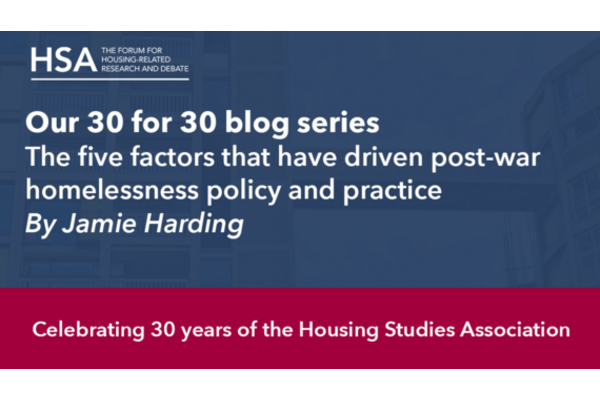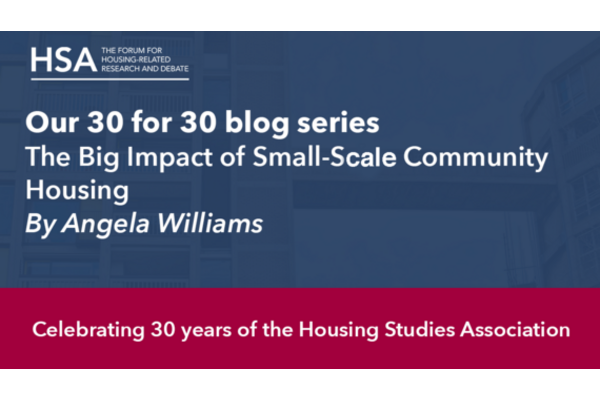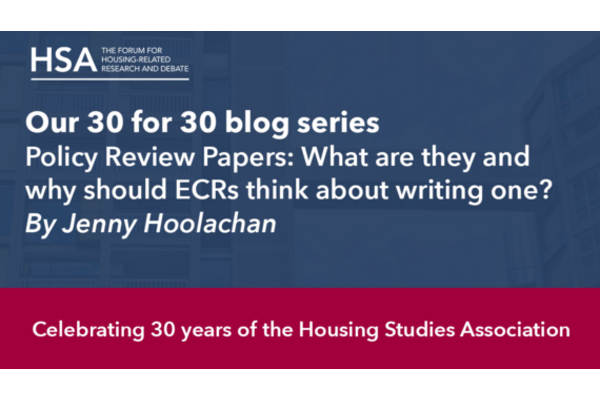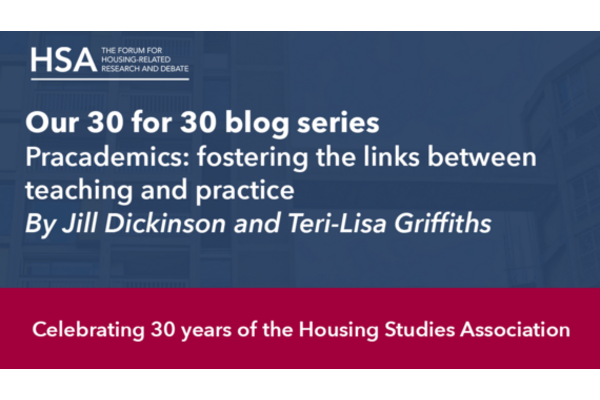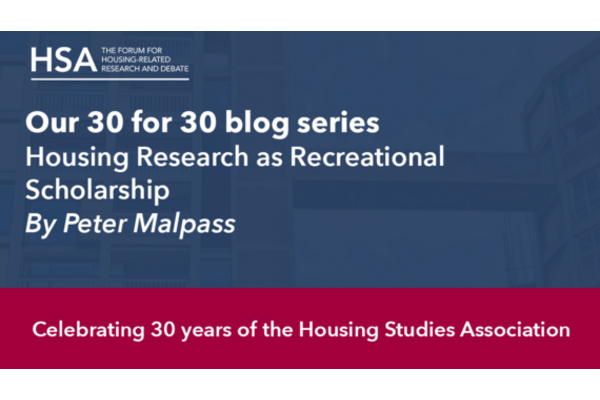The blog reflects upon the key themes of homelessness policy over the past 25 years and is based on Jamie's new book which involved interviews with many key stakeholders, including former government ministers.
The Five Factors That Have Driven Post-war Homelessness Policy and Practice
Homelessness made one of its periodic trips towards the top of the news agenda during the covid-19 pandemic as rough sleepers were place in hotel rooms and households in rent arrears were given protection through a temporary ban on bailiff led evictions. The introduction of two very different measures for distinctive groups of homeless (or potentially homeless) people reflected a long term trend in post-war homelessness policy. From the implementation of the 1948 National Assistance Act, there has been a clear assumption that households with dependent children have different needs, and should receive different forms of protection, to single homeless people. This distinction was most clearly demonstrated by the passing of the 1977 Housing (Homeless Persons) Act, with most decisions to award ‘priority need’ status arising from a household having dependent children.
An examination of post-war history suggests that the belief that different forms of homelessness require different solutions is one of five key factors that have consistently driven policy. Another strong influence is the explanations of homelessness that have been favoured by policy makers. Academics and others have engaged in near constant debate about the causes of homelessness, with this debate developing from a simple individual/structural distinction to incorporate a more complex set of explanations. Policy makers have historically favoured blaming the homeless individual, as most vividly demonstrated through the 1966 drama-documentary Cathy Come Home, but views of homeless households have tended to become more sympathetic with time. In addition, while those making policy have not necessarily followed all the nuances of every debate, it is noticeable that governments documents since 1997 have acknowledged a range of causes of homelessness that go beyond the simple individual/structural dichotomy.
The third key historical influence is the level of demand for social rented housing. Where this is high, homeless people are often perceived to be in competition with waiting list/housing register applicants, leading to restrictive policies being imposed. This is not just a question of the balance between supply and demand for accommodation, but also the extent to which social rented housing is perceived as a desirable tenure. It is no coincidence that the 1977 Act was passed at a time when council housing was beginning to be seen as a less desirable housing option and the preference for home ownership was clearly established.
The fourth factor affecting the services received by a homeless person is their location. Much homelessness legislation has consisted of central government creating powers and duties to be implemented by local authorities, but there has been limited control exercised over the way these powers and duties have been interpreted, leading to substantial geographical variation in the services provided. The delegation of housing powers to Scotland, Wales and Northern Ireland has further widened the gap between different areas of the United Kingdom. Historic attempts to narrow geographical differences through the issue of government circulars and guidance have had only a limited impact. However, the funding linked requirement for local authorities to focus on preventative work, first introduced in 2003-2004, is an example of an initiative that has had a high level of influence on local practice across geographical regions.
Finally, there is the question of whether policy makers focus on primary, secondary or tertiary prevention of homelessness. Primary prevention involves the provision of universal services that benefit all (particularly the poorer parts of the population), secondary prevention targets those individuals and groups at greatest risk and tertiary prevention concentrates on those who are already homeless. While examples of each approach can be found across all time periods, 1945 to the 1960s was a time when the focus was on primary prevention through the mass building of council housing, the passing of the 1977 Act represented a far greater focus on tertiary prevention and it is only since 2003-2004 that secondary prevention has become a major concern of policy, with the 2017 Homelessness Reduction Act representing a further move in this direction.
The five factors discussed above are clearly inter-related. For example, the local authorities that are most generous to homeless households tend to be those with the lowest level of demand for social rented housing. Housing pressures also appear to affect beliefs about the causes of homelessness, with homeless people being most frequently blamed for their own situation in the 1950s, when accommodation shortages and demand for public sector housing were at their highest level.
Of course, this is not a comprehensive list of every factor that has influenced post-war policy, with many others having a particularly strong impact at a specific point in time, e.g. the spread of housing aid centres supported by Shelter in the 1970s. In addition, the importance of each of the five key factors has varied between time periods. It appears that the differentiation between groups is likely to be the most influential factor for the foreseeable future, as is evidenced by the 2021 Domestic Abuse Act (although much of the ‘new’ protection for households who are homeless as a result of domestic violence closely resembles existing powers and duties). My expectations of the next few years are that local authority spending will be squeezed even further, meaning that there are reduced services available to tackle homelessness, but there will continue to be high profile, limited budget initiatives intended to demonstrate the government’s concern for specific groups.
I would be delighted if you would like to read more in Harding, J. (2019) Post-War Homelessness in the UK, Palgrave MacMillan.
Dr Jamie Harding (Senior Lecturer in Social Sciences, Northumbria University)

